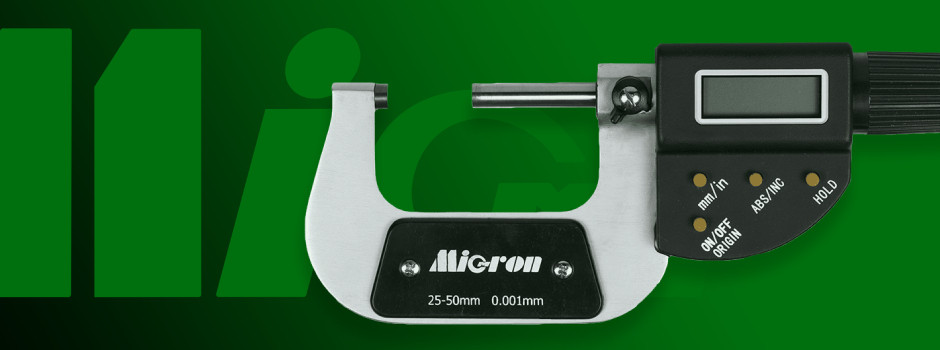
How to use a micrometer
To be able to use a micrometer correctly, you need to know the rules of measurement with this tool, what types of it are, where they are used and what are the features of each of them. The main common feature is the high accuracy of measurements of linear dimensions, namely up to a micron, that is, a hundredth of a millimeter. With the help of micrometers, the final dimensional values of the cross section, thickness, depth are obtained. The tool is used to control and then adjust the parts to the specified parameters according to the drawings.
Micrometer device and operating principle
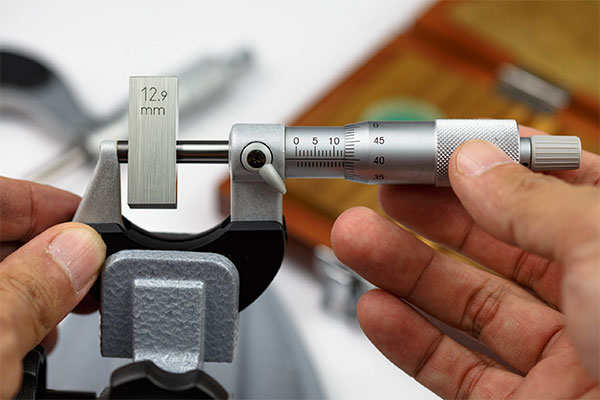 The basis of the micrometer is a bracket, on both sides of which there are measuring elements. They are made of hot tool steel and ground. On the one hand, it is a fixed heel, on the other — a screw adjusting cylinder. Calibration is done using a screw. There is a clamp on the bracket, they fix the size of one part for comparison with another.
The basis of the micrometer is a bracket, on both sides of which there are measuring elements. They are made of hot tool steel and ground. On the one hand, it is a fixed heel, on the other — a screw adjusting cylinder. Calibration is done using a screw. There is a clamp on the bracket, they fix the size of one part for comparison with another.
Another part of the instrument is a stem with a drum. A horizontal scale is marked on the stem, and a vertical scale is marked on the drum. A ratchet is built into the handle, its actuation is regulated by a screw; the minimum actuation force is needed to measure easily deformable parts. The divisions on the stem scale are visible within a few millimeters, the rest of it is hidden in the depths of the cylinder. A straight line is drawn in the middle of the scale, this is the so-called reference line with divisions of 1 mm, on the one hand the pitch is shifted by half a millimeter relative to the other side. On the vertical scale of the drum, the pitch of the divisions is 0.01 mm.
Micrometers are complicated, like all other precision instruments, but using a micrometer is quite simple. There are several types of these tools.
Types by indication
The most common type is smooth. This is the most popular measuring tool for factories. This type is used in almost all industries, as well as in everyday life. Depending on the design , they are divided into the following types:
Analog
They have the simplest design, because they are the cheapest, and it's easiest to use them. The basis of a threaded micrometer is a bracket, on one side of which there is a handle with an adjustment cylinder and a ratchet, and on the other — a fixed sponge. The accuracy of measurements, as well as the accuracy of calipers, is up to hundredths of a millimeter.
Digital
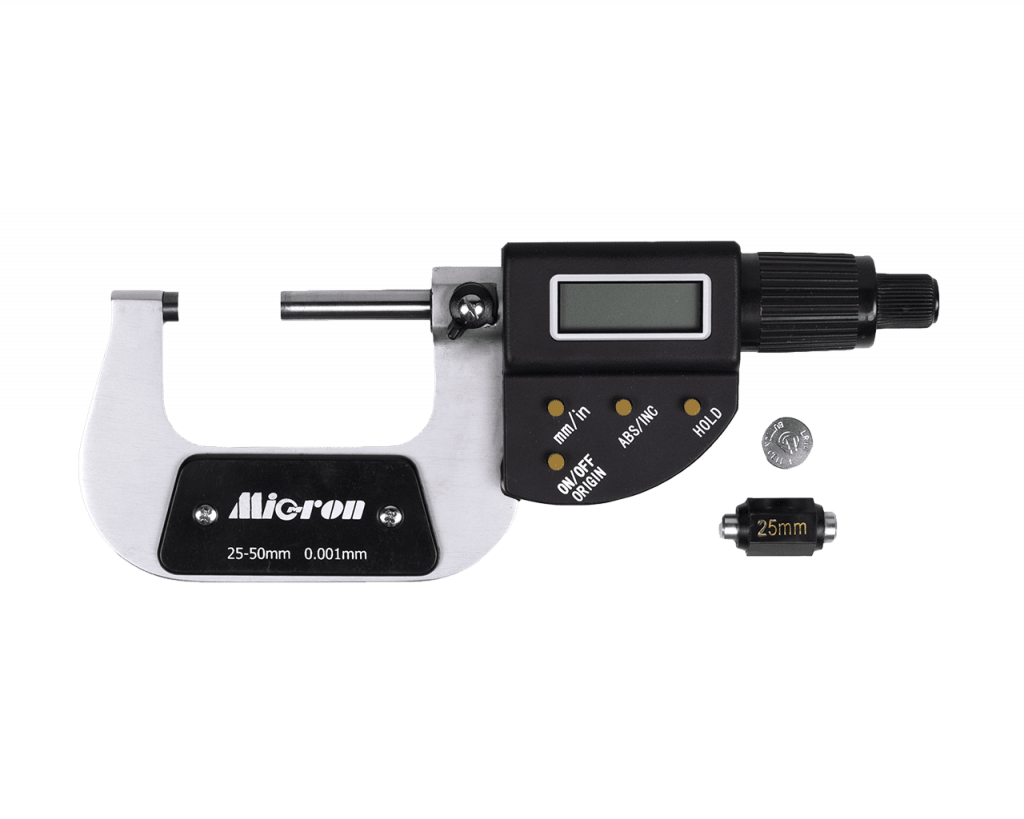 The instrument has a display on which the measurement readings are visible. Digital electronic micrometer it is possible to achieve accuracy up to thousandths of a millimeter. However, such accuracy is possible only with careful handling of the tool; it is unacceptable to drop it, as well as store it at low, high temperatures and high humidity. These devices are 2 times more expensive than analog ones. They are purchased if large amounts of work are expected, and it is necessary to take readings from a micrometer quickly.
The instrument has a display on which the measurement readings are visible. Digital electronic micrometer it is possible to achieve accuracy up to thousandths of a millimeter. However, such accuracy is possible only with careful handling of the tool; it is unacceptable to drop it, as well as store it at low, high temperatures and high humidity. These devices are 2 times more expensive than analog ones. They are purchased if large amounts of work are expected, and it is necessary to take readings from a micrometer quickly.
Lever
These micrometers are also called arrow or clock, since they have a measuring scale in the form of a round indicator with a rotating arrow, resembling a clock. The divisions are marked in a circle with a step of 0.01 mm. In lever micrometers, there is no bracket for changing the internal diameters of holes and grooves. At the end of the pin there is a T-shaped meter, the drive from which is coupled to the indicator.
Laser
Measurements with a laser micrometer are based on the analysis of a laser beam. The analyzer has a photocell that calculates the difference in beam deflections and outputs data to a digital display. This tool is intended for laboratories and is not used in everyday life, as it is quite expensive, requires careful handling, special storage and care.
The user performs measurements manually, and in laser and digital devices, the size values are determined automatically, instantly. Therefore, high-tech devices are used in enterprises in order to increase productivity and quality.
Application areas of micrometers by varieties
All types of micrometers belong to highly specialized measuring instruments. They are used in almost all spheres of human economic activity. Their main advantage is the accuracy of measurements and ease of use. The use of a particular type of device depends on the parts in which it is necessary to measure their parts: external or internal diameters, depth of holes and grooves, tooth steps, thickness of sheets, wire, ball bearings, etc.
Micrometers are smooth
This is a mechanical tool that measures flat and round parts. Smooth micrometers specify the dimensions for a fine fit.
Micrometers-tooth meters
Tooth meters are designed to measure the distances between the teeth of sprockets, gears, screw rods. The device is equipped with cone nozzles, which are selected depending on the size of the teeth or grooves of the gears.
Pipe
 The name itself speaks for itself. It is a highly specialized tool for measuring the thickness of pipes, external and internal diameters. Usually, joints and docking elements require precision processing. The tuberosity of the surfaces is also measured on the pipes.
The name itself speaks for itself. It is a highly specialized tool for measuring the thickness of pipes, external and internal diameters. Usually, joints and docking elements require precision processing. The tuberosity of the surfaces is also measured on the pipes.
Micrometers-thickness gauges
This tool determines the exact thickness readings of sheets made of various materials. There are metal or carbon sheets with a thickness of only a few hundredths of a millimeter, therefore, it will not work in any other way to select the necessary dimensions without a micrometer-thickness gauge.
Universal
This type is called universal because they use replaceable nozzles for various measurements. So with the help of one universal tool, it is possible to produce precise processing of parts of different types.
Wire micrometers
The tool is used in the production of thin wire, as well as balls and rollers for bearings, whose dimensional accuracy varies in thousandths of a millimeter. These are laser and digital micrometers.
Prismatic
This type was named because of its appearance resembling a prism. There is no glass prism in the design. Prismatic micrometers measure the blades of various types of tool knives.
Grooving
In the design of this type there is a retractable pin (probe), which is lowered into grooves, grooves, through holes to measure the depth specified in the drawings with an accuracy of hundredths of a millimeter. These devices are used by milling machines, turners.
Thread meters
Designed to measure the pitch, depth and thread type of screw rods. The device is equipped with nozzles, which are selected depending on the size of the workpiece. On one side of the nozzles there is a groove, on the other — a conical point.
Micrometers with two scales
Two scales in the tool are needed to refine the dimensions by comparison. It is used in the processing of parts of complex structures and parts with complex shapes.
Micrometers for hot rolling
When rolling hot metal workpieces, high dimensional accuracy is also required. For these purposes, special micrometers are used, in which the measuring elements are made in the form of wheels. The tool is fixed in a certain place, and measurements are carried out when rolling.
Despite the large number of varieties, no more than two types of these tools are usually used in any one production. Calibration is carried out before each application, since the high accuracy of the readings depends on the ambient temperature where the parts are processed and storage conditions.
Calibration, accuracy check
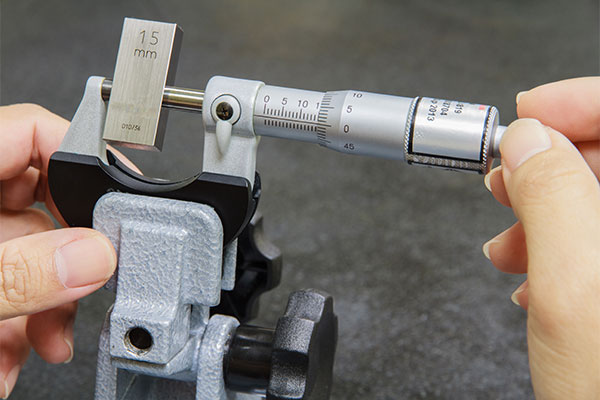 It is necessary to adjust the micrometer immediately before starting the processing of parts.Measuring with a micrometer is possible as accurately as possible only if the adjustment is carried out in the conditions in which the work will be carried out. The setting includes:
It is necessary to adjust the micrometer immediately before starting the processing of parts.Measuring with a micrometer is possible as accurately as possible only if the adjustment is carried out in the conditions in which the work will be carried out. The setting includes:
- Removal of dirt and chip particles from the surfaces of measuring cylinders. Clean rags are used for cleaning; abrasive items are not allowed to be used. The final cleaning is done using a sheet of paper, which is clamped between measuring sponges without effort and stretched.
- Using reference templates. These are ground parts made of tool steel with marked markings. The marking values must match the divisions on the instrument. With the help of templates, digital and arrow keys are checked. There may be a shift of the arrow on the arrow indicator, in the digital one there is a lack of energy of the supply element.
Precise machining of parts can only be started if the micrometer error is determined and corrected.The metal handler can calibrate the micrometer itself.
How to set the micrometer to zero
To quickly adjust the micrometer and set the zero mark, you need a skill. Zero is set both before the start of work and periodically during the processing of parts. To do this, unscrew the drum and separate the stem. The cylinder of the drum rotates freely in the loose position, and becomes stationary after fixing with a nut with a ratchet. The screw must be rotated with a nut until the jaws close. To set the micrometer to zero, you need to tighten the screw until the ratchet clicks, and rotate the drum until the "0" on it coincides with the reference division on the stem. After that, the divisions must be fixed with a nut. Special measurements may not start from scratch, in such cases, reference inserts are used, and the adjustment is performed according to them.
How to learn to measure with a micrometer
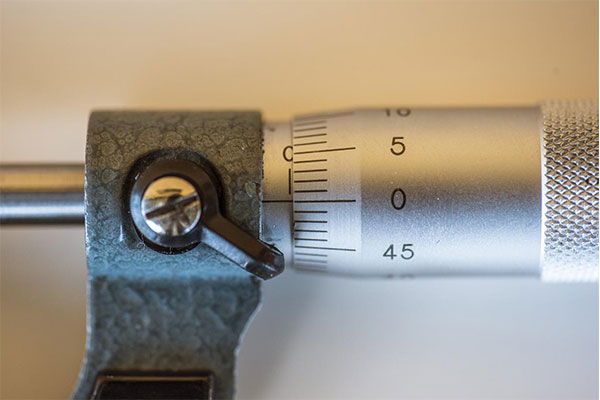 You need to take some metal part (drill bit, screw, ball or roller bearing), the dimensions of which are known from the technical documentation. Next:
You need to take some metal part (drill bit, screw, ball or roller bearing), the dimensions of which are known from the technical documentation. Next:
- We set "0" in micrometer.
- The part is clamped between the sponges until the ratchet clicks.
- We look at the values and compare them with the instructions for the part.
- If necessary, we make tool settings.
To properly measure the part with a micrometer, it should not be clamped with a drum. The values must first be determined by an integer, and then by a fractional value on the scale. When measuring the same type of parts, you need to fix the value with a screw; this way you can check the dimensions quickly.
Tips for the care and maintenance of the device
Since a micrometer is a high-precision instrument, it must be handled carefully: do not drop it, store it in a special case at room temperature and moderate humidity. Threaded parts need to be periodically lubricated with tool oil, the scales should be wiped, and the feeding elements in digital and laser models should be replaced in time.
Chemical aggressive substances, alkalis and salts should not be allowed to enter the device in order to exclude the appearance of corrosion. If one has already begun or dark spots have appeared on the scale, the device must be treated with 70% vinegar solution, cleaned with felt with GOI paste and wiped with a rag slightly soaked in tool oil.
It is better to store the device in a case with foam padding on the bottom and top, wrapping it with special oiled parchment paper. You need to buy a micrometer for your own precision production new and only in a specialized store. Adhering to the described rules, you will avoid problems with the tool, unnecessary repair costs, you will work with the micrometer easily and ensure the quality of the parts produced.
